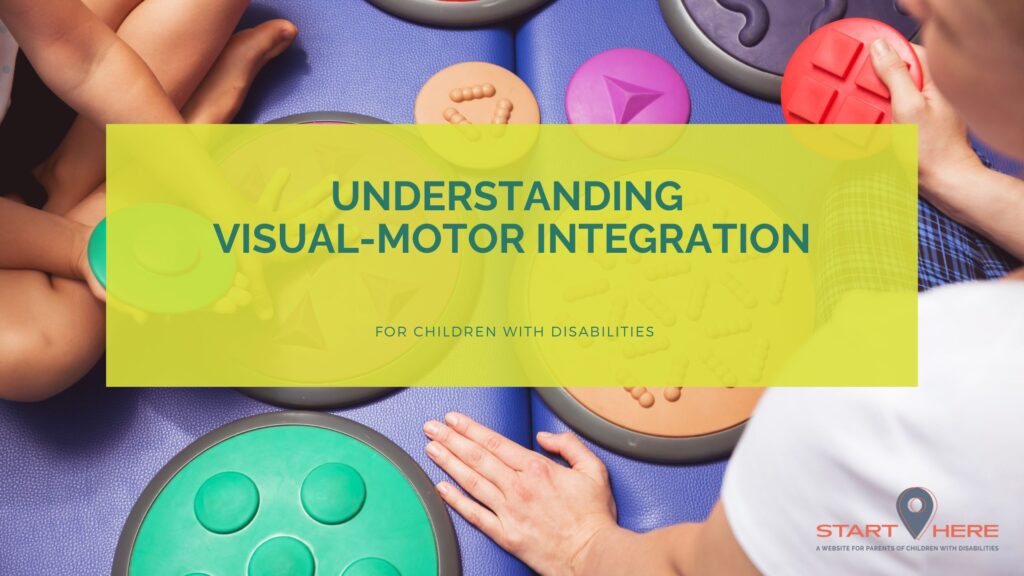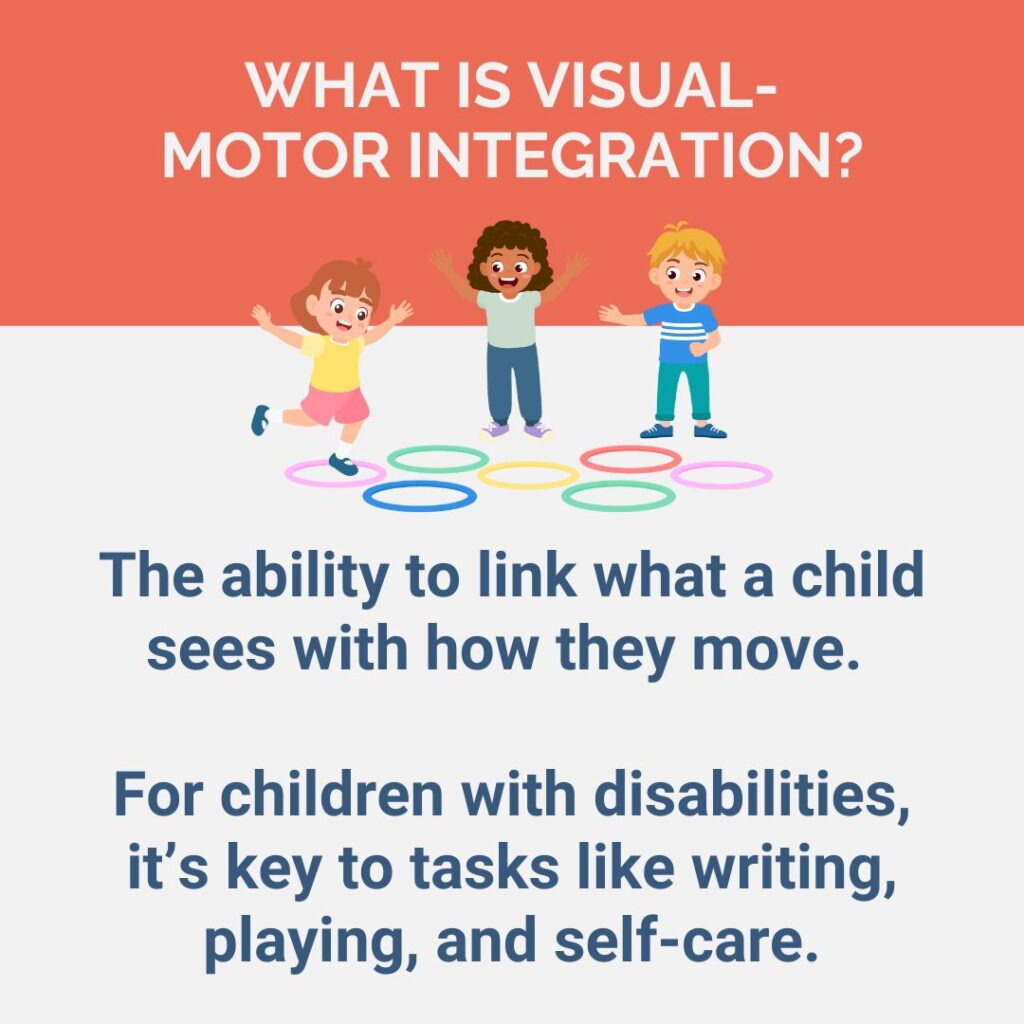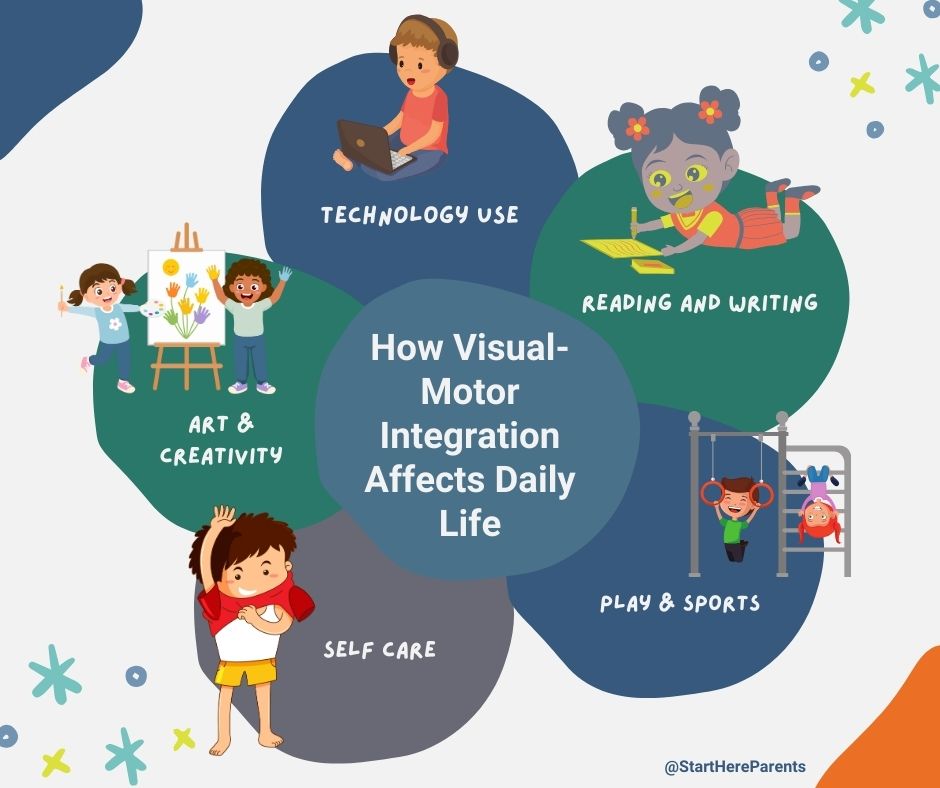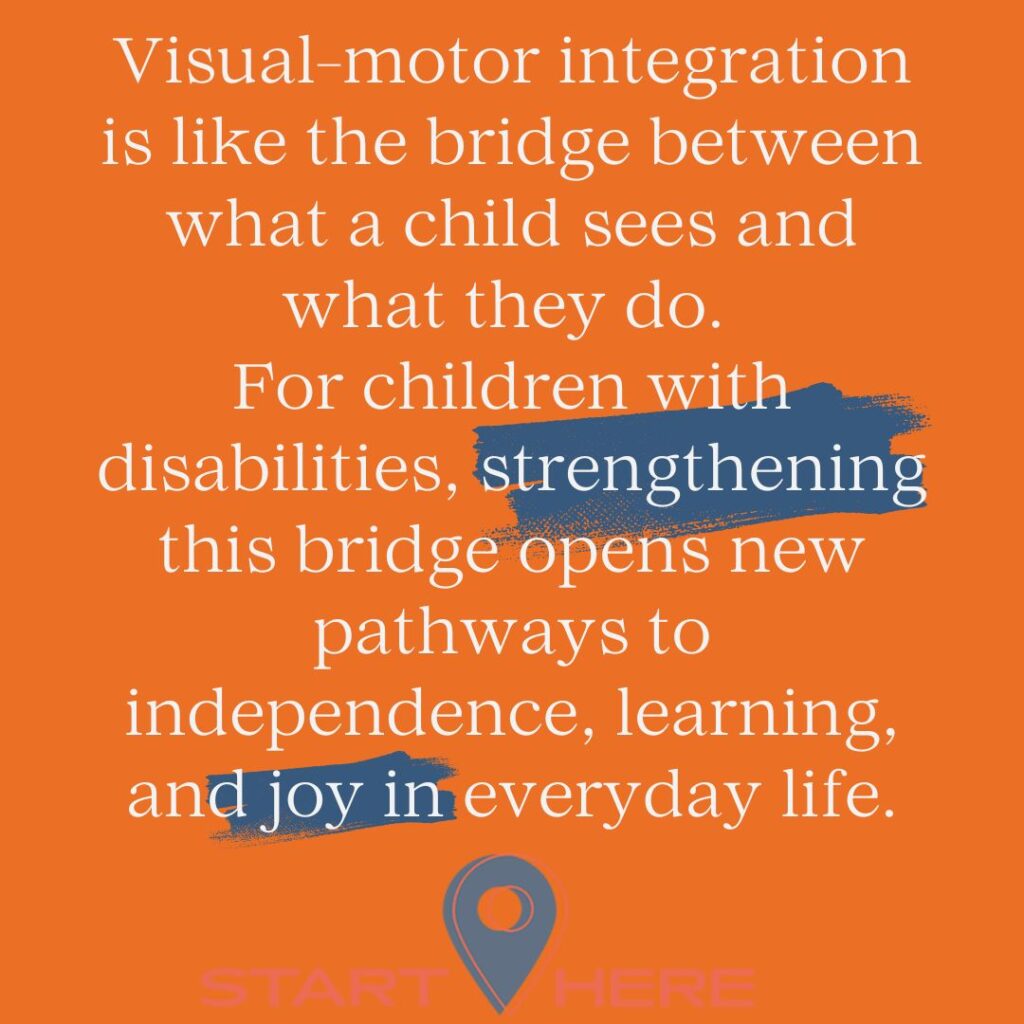
Understanding Visual-Motor Integration for Children with Disabilities
As parents, we know how essential it is for our children to develop a variety of skills that will help them thrive in everyday life. One of the foundational skills that support academic success, independence, and self-confidence is visual-motor integration. This skill refers to the ability to coordinate visual information with motor movements, allowing a child to perform tasks such as writing, drawing, catching a ball, or even using utensils.
For children with disabilities, visual-motor integration can present unique challenges. Understanding what it is, how it develops, and ways you can support your child’s progress can make a significant difference in their growth and independence.

Visual-motor integration is a skill that involves the brain processing visual information and coordinating it with motor responses. It’s how a child is able to take what they see and turn it into action. For example, when writing, a child needs to see the letters or words on the page and then use their hand to form those shapes. Similarly, when playing sports, a child needs to track the ball’s movement and adjust their hand-eye coordination to catch it.
Children with developmental disabilities may face challenges in visual-motor integration due to differences in sensory processing, muscle tone, or cognitive abilities. However, these challenges don’t mean that progress isn’t possible. With the right strategies, these skills can be developed and strengthened over time.
How Does Visual-Motor Integration Develop?
Visual-motor integration develops in stages as a child grows. The process starts early, even before a child can walk or talk. Here are some general developmental milestones for visual-motor integration:
- Infants and Toddlers – Babies begin developing hand-eye coordination as they reach for toys and explore objects. By the time they are toddlers, they start building skills like stacking blocks or scribbling with crayons.
- Preschool Age – Around the preschool years, children start drawing simple shapes, such as circles and squares, and learn to use scissors. These activities require the coordination of the eyes, hands, and fingers.
- Elementary School Age – As children enter school, they start to develop more complex visual-motor skills, like writing letters and numbers, copying shapes, and using tools such as rulers or calculators. This stage often presents challenges for children with disabilities, but interventions can help them catch up.

How Visual-Motor Integration Affects Daily Life
Visual-motor integration is critical for a child’s everyday tasks, from the classroom to playtime. Here are some areas where visual-motor skills are essential:
- Reading and Writing: Children need to visually track letters and words, then translate that information into writing. Poor visual-motor integration can make it difficult to write legibly or to stay focused on reading tasks.
- Play and Sports: Catching a ball, hitting a target, or drawing are all examples of activities that rely on visual-motor coordination.
- Self-Care: Skills like buttoning a shirt, tying shoes, or brushing teeth require precise coordination of vision and hand movements.
- Art and Creativity: Drawing, coloring, cutting with scissors, and assembling crafts all depend on the smooth coordination of vision and hand movements. Challenges in this area can make creative activities frustrating instead of fun.
- Technology Use: Tasks like typing on a keyboard, using a touchscreen, or controlling a computer mouse require precise visual tracking and hand coordination. Difficulty in this area can affect a child’s ability to engage with modern learning tools.
For children with disabilities, difficulties in visual-motor integration can make these tasks more challenging, but with focused support, they can improve over time.
Strategies to Support Visual-Motor Integration for Children with Disabilities
If you’re a parent of a child with disabilities, there are many ways you can support the development of visual-motor integration. Here are some strategies and activities to try at home or in therapy:
1. Drawing and Tracing
Encourage your child to practice drawing shapes, letters, or numbers. You can use tracing worksheets, or let them trace shapes using their finger or a pencil. Start with larger shapes and gradually make them smaller as their skills improve.
2. Building and Stacking
Activities like building with blocks, stacking cups, or using construction toys help your child work on both hand-eye coordination and spatial awareness. These activities are also a fun way to improve motor skills.
3. Cutting with Scissors
Using child-safe scissors to cut along lines or simple shapes is a great way to work on both fine motor skills and visual-motor integration. Start with wide, straight lines and move on to curves and more complex shapes as your child becomes more proficient.
4. Ball Play
Activities like tossing or catching a ball can be a fun way to practice visual-motor coordination. Start with a large, soft ball and work up to smaller ones as your child’s skills improve.
5. Puzzle Play
Puzzles are fantastic for promoting visual-spatial reasoning, hand-eye coordination, and fine motor skills. Start with larger, simple puzzles and work toward more intricate ones as your child masters the skill.
6. Activities with Technology
There are numerous apps and games designed to promote visual-motor integration. Interactive digital activities, such as drawing apps or games that require precision and coordination, can help support your child’s development.
When to Seek Professional Help
While many children naturally develop visual-motor integration skills over time, some children with disabilities may need additional support. If your child struggles with tasks like writing, drawing, or participating in sports, and if they are falling behind their peers, it may be time to consult an Occupational Therapist (OT).
An OT can assess your child’s visual-motor integration abilities and create a personalized treatment plan to support their development. Therapy can include targeted exercises, sensory integration techniques, and the use of assistive devices.
Visual-motor integration is a vital skill that impacts your child’s ability to engage with the world around them. By providing the right support, you can help your child with disabilities improve their hand-eye coordination, boosting their confidence and independence. From drawing to playing sports, every activity is an opportunity for growth. With patience, practice, and the right interventions, your child can achieve their fullest potential.

